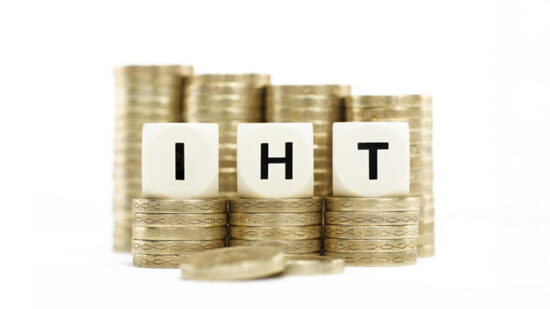Sterling
Sterling is now considered the 3rd most important safe-haven currency after the yen and US dollar, a status which saw it soar against the euro to reach levels last seen in October 2008. A high of €1.2705 was touched last Wednesday, although improvements against other currencies were more modest. Against the dollar the pound was able to recover some of the ground lost over the past few weeks, although it has since fallen back as the situation in Europe deteriorated further and the Federal Reserve minutes suggested the threat of imminent QE in the US has diminished. Trading was generally quiet with the economic releases mildly positive but not enough to get investors overly excited.
After a period of consolidation, the GBP/EUR looks likely to push higher again this week, rising above €1.2700 and potentially on to €1.2800, although the pound remains very vulnerable to bad news. The dollar is likely to be the greater beneficiary of safe-haven flows and as such GBP/USD rates are likely to trade lower in the coming days.
US dollar
Despite disappointing Non-Farm Payroll figures, the US dollar powered ahead against nearly every currency save the Japanese yen as risk aversion returned once more. It’s difficult to understand the correlation between the two events but it seems that poor NFP figures mean weak US growth, which leads on to weak global growth, which in turn equates to a flight to safe haven currencies. Coupled with lower interest rates in Europe and more Quantitative Easing in the UK, the dollar pushed on to a low of $1.2167 versus the euro. With the US economy stumbling along, there are no compelling fundamental reasons to buy dollars, but with the single currency now the funding currency of choice, it looks like the dollar could see further gains in the weeks ahead.
With currency investors also nervous about the outlook elsewhere, the dollar looks likely to continue to be the main beneficiary of safe-haven flows, along with the yen and should stay on the front foot for the foreseeable future. GBP/USD could test the 2012 lows at $1.5235 in the near future, although the pound looks more robust than the euro and may manage to hold its own. Resistance is at $1.5470, $1.5577 and $1.5720.
Euro
Disappointment that the European Central Bank didn’t do more to help with the Spanish and Italian bond issues saw the euro start last week near 2 year lows against the US Dollar, despite the poor US Non-Farm Payrolls. Sterling moved above €1.2600 for the first time since October 2008, and stayed there last week, briefly testing above €1.2700 midweek. The ECB cut in interest rates last week did not instil the intended level of confidence and Spanish bond yields moved back above the crucial 7% level with Italian debt not all that far behind. The euro has now become the leading funding currency, to be sold against all the other major currencies, with increasing numbers of investors betting on a breach of $1.2000 versus the US Dollar in the near future.
Barring a miraculous turn in fortunes, the EUR/USD rate looks likely to push lower in the coming days, targeting $1.2000 and then $1.1877. The GBP/EUR rate should therefore push above €1.2700 and on towards €1.2800, but remains vulnerable to corrections lower on negative UK data or comments.
New Zealand Dollar
The Kiwi suffered late last week after some poor economic data but overall business was subdued with volumes light. The NZD has rallied strongly since late May from highs around 2.10 versus Sterling to recent lows just above 1.9250 and so this pull back should be put in context. Against the US Dollar, the NZ has fallen from above 0.80 to below 0.79 last Thursday, not helped by the flight to quality that has ben prevalent this week. Overall though the currency has fared well through the global problems and analysts feel it should hold steady in the second half of 2012.
Despite the ongoing problems in Europe, New Zealand is more dependent on trade with China and so the kiwi dollar is likely to hold up reasonably well so long as Chinese growth keeps ticking over. The RBNZ still seems unlikely to cut interest rates in the near future and the kiwi’s yield advantage over most of the majors should keep it in demand. Support is at NZ$1.9280 resistance is at NZ$1.9700. Expect range bound trading.
Australian Dollar
After a firm start, the Aussie lost ground slowly through the early part of last week to a surging sterling (nothing to do with the 4-0 defeat at cricket we understand), but regained its poise to improve to levels last seen a month ago, helped by a positive consumer confidence report and the continued attraction of the currency as a ‘high’ yielding asset. The domestic economy continues to do well when compared to other major world countries, and the Aussie should remain supported in the short term by yield plays and a relative safe haven.
GBP/AUD remains range bound from A$1.5070 to A$1.5270 and this looks likely to continue this week as the markets seek direction. On balance we favour a move lower rather than higher, if only because the pound is more susceptible to bad news.
Canadian Dollar
Sterling started last week steady against the Canadian Dollar and made modest gains up to a high of C$1.5880 by mid week. News of decent Chinese growth figures saw the GBP/CAD rate fall the best part of two cents over the last 24 hours before bouncing. Against the US Dollar, the CAD strengthened as oil and equity prices rose, but generally trade in the Canadian was quiet with no economic or monetary indicators giving any real direction.
We therefore expect the GBP/CAD rate to fall further this week, testing as low as C$1.5548 and C$1.5464. Resistance is at C$1.5880.
USD/CAD is on support at C$1.0150 now, but could test to C$1.0120 this week, although ranges will likely remain tight.
Chinese Yuan
After the surprise interest rate cut by the People’s Bank of China, the yuan depreciated through last week to its lowest level against the US dollar since December 2011. Economic releases in the early part of last week vindicated the move, with inflation and factory prices falling more that thought. Clearly the authorities are concerned about the slowing economy and additional measures cannot be ruled out if there is no pick-up in growth. The GDP numbers released last Friday were more or less on target, but leave some areas of concern.
Despite the US overtaking Europe as China’s largest trading partner, the yuan is still tracking the EUR/USD rate and, with the euro likely to fall further, more yuan depreciation seems likely. A test of 6.4000 is quite plausible in the coming weeks.
Japanese Yen
The Bank of Japan last week joined the UK in increasing its asset purchases in the vain hope of stimulating their economy, but equally importantly, in trying to weaken the yen. Unfortunately neither looks like it will work in the short term, and the yen continues to be one of the main safe haven currencies. From levels around 123.50 prior to the announcement, the currency firmed to 122.50 against sterling as investors were unimpressed with the news. It rose to a 6 week high against the euro at 96.47.
The yen’s safe-haven status is going nowhere and with the euro crisis likely to rumble on for the foreseeable future, there is no end in sight. As such, the USD/JPY rate will continue to trade below 80.00 nd GBP/JPY will remain under pressure. A test below 122.00 is quite possible this week, with next support at 119.60.
South African Rand
The rand softened towards the end of last week as speculation grew that the central bank would be joining Korea and Brazil in lowering interest rates to stimulate their economies. It dropped to R8.3750 versus the US dollar, a fall of 1.2%, and to R12.90 against the pound. While economic data last week was mixed, economists are concerned that the outlook for the second half of 2012 is gloomy, with South Africa’s main trading partner, Europe, still struggling with the impact of its debt crisis.
The GBP/ZAR rate is back above the R12.80 pivot and could well push back over R13.00 this week as Europe’s woes continue. Support is at R12.60.








